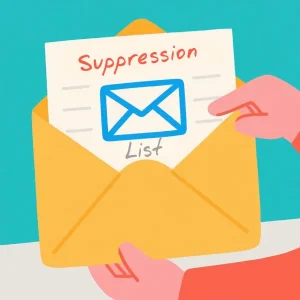Free Email Suppression List Management Tool
Convert Email List to SHA-256 Hashes
A Privacy First Lead Generation Tracking Platform
Learn More About Integr8
Inbuilt Suppression List Management
Streamline compliance and campaign targeting with our easy-to-use, integrated suppression list management system. Upload, manage, and distribute lists effortlessly.
Integrated Fraud Prevention
Protect your budget and data integrity. Our platform automatically detects and blocks fraudulent activity at both the click and conversion level using multiple detection methods.
Proxy & Duplicate Detection
Identify sophisticated fraud tactics with built-in residential proxy detection and prevent duplicate conversions using advanced device fingerprinting technology.
Frequently Asked Questions
Learn how a partner marketing platform optmized for Lead Generation can streamline your Affiliate Program Growth
What exactly is an email suppression list?
An email suppression list is a collection of email addresses that you should not send marketing emails to. These typically include addresses that have unsubscribed, marked your emails as spam, resulted in a hard bounce (permanently undeliverable), or are otherwise known to be invalid or problematic. It acts as a “do not contact” list specifically for your email campaigns. For more information about Email Suppression Lists you can read this article.
Why is managing a suppression list so important?
Effective suppression list management is crucial for several reasons:
- Compliance: It helps you comply with anti-spam laws (like CAN-SPAM and GDPR) by honoring opt-out requests promptly.
- Deliverability: Sending to known bad addresses or uninterested recipients hurts your sender reputation, leading to more emails landing in spam folders.
- Cost Efficiency: You avoid wasting resources sending emails that won’t be delivered or opened.
- Brand Reputation: Respecting recipient preferences builds trust and protects your brand image.
What types of emails go on a suppression list?
- Unsubscribes: Users who explicitly opted out via an unsubscribe link.
- Hard Bounces: Emails returned as permanently undeliverable (invalid address, domain doesn’t exist).
- Spam Complaints: Users who marked your email as spam through their email provider.
- Known Bad Addresses: Addresses identified as invalid through list cleaning services or previous bounces.
- Specific Role Accounts (Optional): Sometimes addresses like support@, admin@, sales@ are suppressed if not explicitly opted-in.
How are addresses typically added to the list?
Addresses are usually added automatically when a user clicks an unsubscribe link integrated with your platform, when an email hard bounces, or when a spam complaint is registered via feedback loops from ISPs. You can often also manually upload lists of addresses to suppress (e.g., from a previous system or partner requirements).
Can I use one suppression list for all my campaigns?
Generally, yes. A centralized suppression list ensures that once someone opts out or is identified as problematic, they aren’t contacted by any of your campaigns sharing that list. However, if you operate distinct brands or lines of business under one account, you might need mechanisms to manage suppressions separately or allow cross-brand opt-ins where appropriate and compliant. Platforms like Integr8 often provide tools to manage this effectively.
How is a suppression list different from just removing someone from a mailing list?
Removing someone from a specific mailing list only stops emails sent to that list. If they exist on other lists or are added back later, they might receive emails again. Adding someone to a suppression list acts as a global block, preventing emails from being sent to that address from any campaign using that suppression list, even if they are accidentally re-uploaded to an active mailing list.
